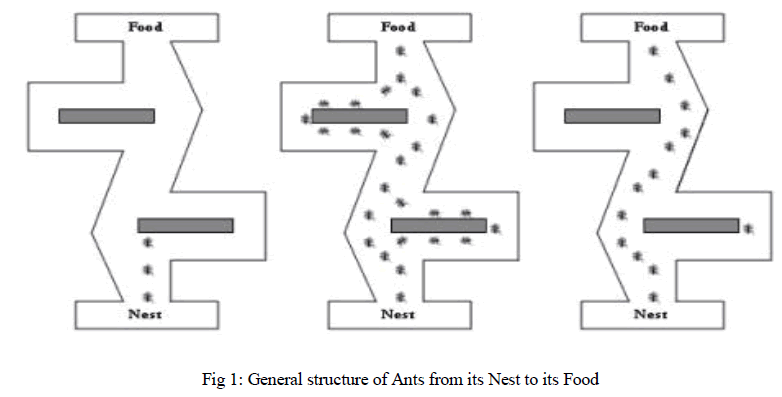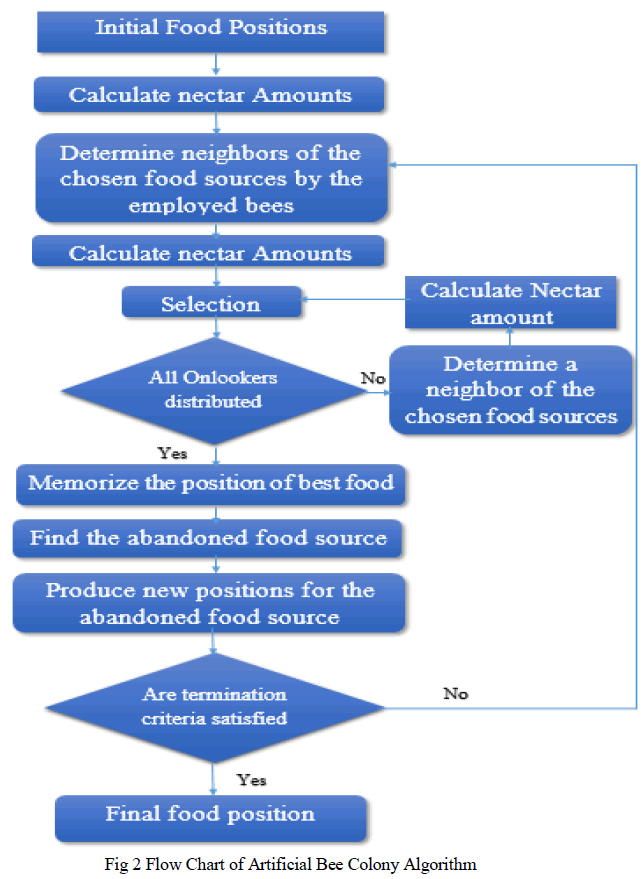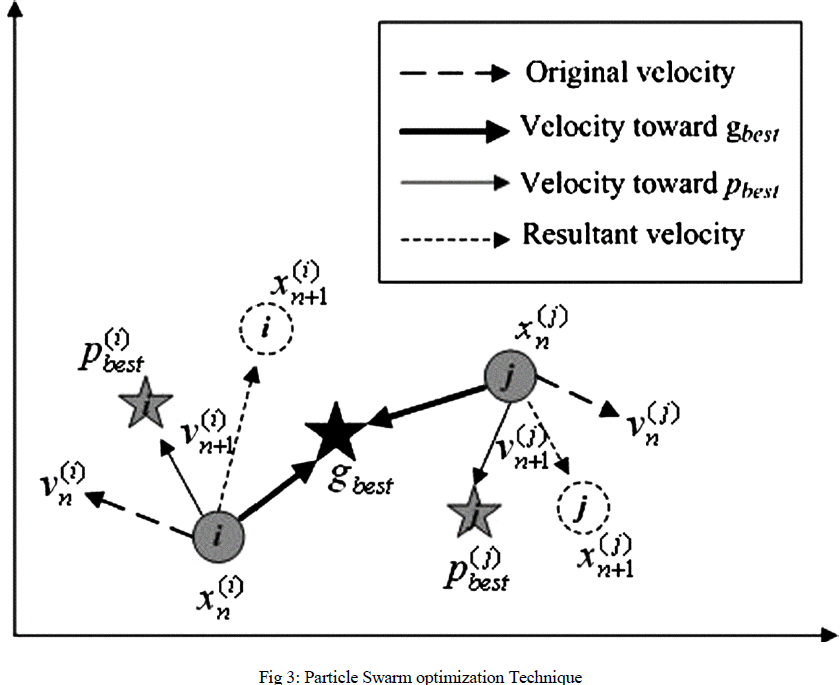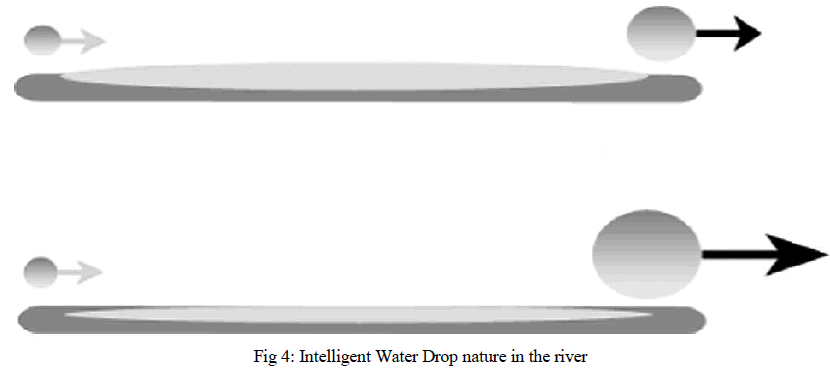ISSN ONLINE(2320-9801) PRINT (2320-9798)
ISSN ONLINE(2320-9801) PRINT (2320-9798)
Vivek G, Vrinda Shetty
|
| Related article at Pubmed, Scholar Google |
Visit for more related articles at International Journal of Innovative Research in Computer and Communication Engineering
Image compression is one of the most important and successful applications of the wavelet transform. Images will have huge amount of information which require more storage space, and high transmission bandwidths and more transmission time. So it is important to compress the image by eliminating the redundant information in the image and encoding only the essential information. As multimedia information‟s are growing in huge numbers there is a need for compression, to reduce the hardware storage space and bandwidths for transmission. Hence image compression has become a necessity. This paper reviews some of the optimization techniques used for image compression. These techniques are based on Swarm intelligence. Swarm Intelligence is based on the collective behaviour of self-organized, decentralized, artificial or natural systems. This paper reviews some of the optimization algorithms based on Swarm intelligence like Ant colony optimization, Artificial Bee Colony Algorithm, Particle swarm optimization, and the Intelligent water drop algorithm.
Keywords |
| Image compression, Swarm Intelligence (SI), Ant colony optimization (ACO), Artificial Bee Colony Algorithm (ABC), Particle swarm optimization (PSO), Intelligent water drop algorithm (IWD). |
INTRODUCTION |
| In recent years, the demand and development of multimedia product is growing increasingly fast, resulting in insufficient bandwidth of network, data storage space and transmission capacity. Therefore, the theory of data compression becomes more and more significant for reducing the data redundancy to save more storage space and bandwidth for the transmission. In computer science compression of data is the process of encoding useful information using fewer bits or other information containing units than an un-encoded representation. Compression is beneficial because it helps in reducing the usage of expensive resources like hard disk space, transmission bandwidth. |
| The basic objective of image compression is to reduce the irrelevant and redundant information and maintaining the original quality or providing an acceptable fidelity. Uncompressed graphics, audio and video data require considerably more storage capacity and high transmission bandwidth. The requirement for data storage capacity and data transmission bandwidth continues to exceed the potentiality of available technologies regardless of rapid progress in density, mass storage, processor speeds and the performance of digital communication system. |
| Swarm Intelligence is based on the collective behaviour of self-organized systems, which consists of many individuals that are coordinated and organized by the principles of indirect communication, self-organization and decentralized control. |
| The problem taken is divided into following objectives: To reduce the size of compressed image and to reduce the elapsed time of compression by using Swarm Intelligence based algorithms. Completion of above two objectives with minimum distortion in reconstructed image. The results are compared on the basis of parameters like Peak Signal to Noise Ratio (PSNR), Mean Square Error (MSE). |
RELATED WORK |
| Shu Chuan Chu et.al [1] have proposed an overview of various Swarm Intelligence algorithm. Swarm Intelligence is based on the collective behaviour of self-organized systems. [2] Swarms are systems that consist of many individuals that are coordinated and organized by principles of indirect communication, self-organization and decentralized control. Simranjeet Kaur et.al [3] have proposed various Ant Colony based algorithm for continuous optimization problem on images like Image compression, Edge Detection, Segmentation etc. ACO can be used to find an optimal solution for a given problem. Nada M. A. Al Salami [4], have proposed Ant Colony Optimization Algorithm, where it can be used to solve combinatorial problems. By Collecting Various Solutions the algorithm finds the best solution among the obtained solutions which in other words called as an optimal solution. M. Mohamed Ismail and Dr. K. Baskaran [5], have worked on Adaptive Lifting Scheme based image compression using Artificial Bee Colony Algorithm. Artificial Bee Colony Algorithm is used for finding different update co-efficient by local search and finally chooses the optimal update coefficient to gain the better quality images.Vrinda Shivashetty and G.G Rajput [6] have proposed Adaptive Lifting Based Image Compression using Interactive Artificial Bee Colony Algorithm. Artificial Bee Colony Algorithm is one of the best optimization algorithm which can be used for finding direction window size to obtain the better quality image and best compression ratio. R.Ramanathan et.al [7] have Proposed Improved Wavelet Based Compression with Adaptive Lifting Scheme Using Artificial Bee Colony Algorithm. ABC is a foraging process where it includes recruitment and the abandonment process. Nishat kanvel et.al [8] have proposed a method to optimize the prediction function used in the process used in Particle Swarm Optimization for Compression of an Image. M.Mohamed Ismail and Dr.K.Baskaran [9], have worked on Clustering Based Adaptive Image Compression Scheme Using Particle Swarm Optimization Technique, PSO is a uses a Fitness value for the optimization process. Hamed Shah-Hosseini [10], have worked on the intelligent water drop algorithm which is a swarm based and nature inspired optimization algorithm. Jaspreet Kaur Sidhu, Harish Kundra [11], have proposed Intelligent Water Drop Algorithm Based Image Compression where it can be used to compress the image that helps to reduce the size of an image. |
ANT COLONY OPTIMIZATION |
| Ant colony optimization is one of Swarm Intelligence technique. Ant colony optimization algorithms mimics the actions of an ant colony, which is a probabilistic technique used for problems with finding better paths through the graphs. Each Artificial „antsâÃâ¬ÃŸ that is simulation agents constructs a solution to the problem my moving through a parameter space. Then among the obtained solution the better one is chosen. While natural ants are exploring the environment if they find any resources they direct each other to reach that resource by laying down the pheromones. They also record their positions and the obtained solutions for finding an optimal solution for the path to reach that resource. |
 |
| The fig 1 summarizes the following. Where the natural ants finds the optimal path from the nest to their resource which is food in the above figure, which can also be called as food-seeking behaviour of the ants. Food seeking is population based searching process. Each individual ants constructs a path from the source to destination which is from the nest to food respectively, by moving in all possible directions. Each ant constructs a path from nest to food by following the quantities of pheromone level. The intensity of laying pheromone would improve the decision making of subsequent ants and path choosing process. Then among the obtained solution the best path is chosen. |
ARTIFICIAL BEE COLONY ALGORITHM |
| Artificial Bee Colony (ABC) is one of the Swarm Intelligence technique. Artificial Bee Colony algorithm was proposed by Karaboga in the year 2005. Artificial Bee Colony algorithm mimics the behaviour of real bees. Where bees find nectar and share some details about food sources to the bees in the nest. There are three different kinds of bees which are described as agents. These agent bees play important and different roles in the optimization process. The different artificial agents are known as the employee bee, the onlooker bee, and the scout bee with different responsibilities. The employee bee will be present on a food source, to represent as a spot in the solution space, and helps the onlooker bees to gather at the reference spot. The onlooker bees gets many locations to the food sources and they select any one of the location to hive the nectar. Finally, scout bees proceed to locate new food sources to further gather the nectar, it also helps in abandoning exhausted food source. |
 |
| In the fig 2 it summarizes the Artificial bee Colony Algorithm In the beginning phase it calculates the Nectar amount of the food source, then it compares it with all other known food sources then it select the optimal one in the sense the one which has higher nectar quantity . It chooses that has its food source and after it has been fully emptied it abandons that food source. So finally it selects another food source with the higher nectar quantity. This process will be keep on repeating. |
| Artificial Bee Colony algorithm is one of the optimization technique which is a population based search procedure where food positions are modified by the bees with respect to time and their main focus is to search the places of food sources which have high nectar. |
PARTICLE SWARM OPTIMIZATION |
| Particle swarm optimization is one of swarm intelligence technique. Particle swarm optimization deals with problems for finding a best solution and in an n-dimensional space it can be represented as a surface or point. Here each particle finds the solution to the problem, to do so hypothesis are plotted in the space and selected with an initial velocity, and a communication channel between the particles. Once an initial velocity are applied, Particles starts moving through the solution space and accelerates towards the other particles which have better fitness values within their communication grouping. The main principal of this approach when compared to other global minimization strategies is that the huge number of members that make the particle swarm makeup this method remarkably flexible to the problems of local minima. |
| Particle swarm optimization (PSO) was first introduced by Kennedy and Eberhart. It is a relatively new stochastic optimization technique that can simulate the swarm behaviour of birds flocking. In PSO, an individual in the swarm, called a particle, represents a potential solution. Each particle has a fitness value and a velocity, and it learns the experiences of the swarm to search for the global optima. |
 |
 |
INTELLIGENT WATER DROP ALGORITHM |
| Intelligent water drops algorithm is one of the nature inspired swarm based optimization algorithm which was introduced in the year 2007. The algorithm mimics behaviour of natural water drops in rivers. Each water drops carry some amount or quantity of soil while flowing. |
| Intelligent Water Drop algorithm is built on the actions that takes place in the natural river, the changes that occur in the environment when the river is flowing and the reactions and actions that take place among water drops in the river. Rivers usually chooses an optimal path with respect to the conditions of its surroundings to finally reach to its ultimate goal which is usually a sea or a lake. These theory is embedded into the algorithm for solving different kinds of problems like traveling salesman problem. |
 |
| In the fig 4 it shows that the intelligent water drops i.e. natural water drops that flows in the river with less soil gathers more soil and gets more increase in speed. |
| Natural River usually finds an optimal path among all available paths on its way from the source to destination while flowing. The optimal path is obtained by considering each water drops where each water drops find an optimal solution, and they will react in the environment, the reactions basically takes place between the water drops in the river beds. The Intelligent Water Drop algorithm can be used for solving different kinds of problems where it can be used for finding solutions to the n-queen puzzle, and multiple knapsack problems in which optimal solutions are obtained, and the travelling salesman problem (TSP). |
CONCLUSION |
| In this paper we review some of the preliminary concepts of swarm Intelligence with a survey on Ant Colony Optimization, Artificial Bee Colony Algorithm, Particle Swarm Optimization, and Intelligent Water Drop Algorithm. Even though we have many image compression techniques, optimization algorithms are applied for the compression to yield best compression ratio, as well as to reduce the time taken for compression of an image. By studying and discussing some of the optimization techniques this survey paper gives clear idea about the optimization techniques. Based on the review of all four optimization technique we conclude that the Particle Swarm optimization will yield the best result for the optimization. |
References |
|